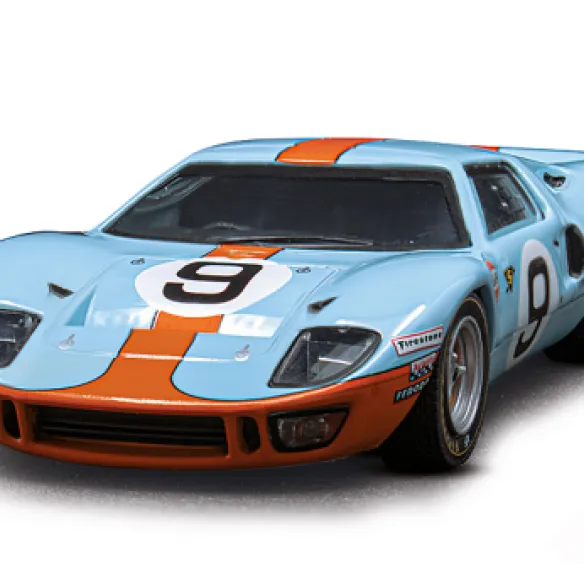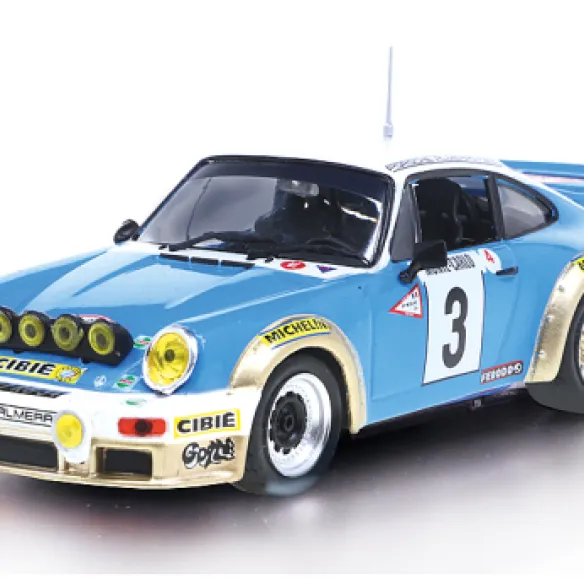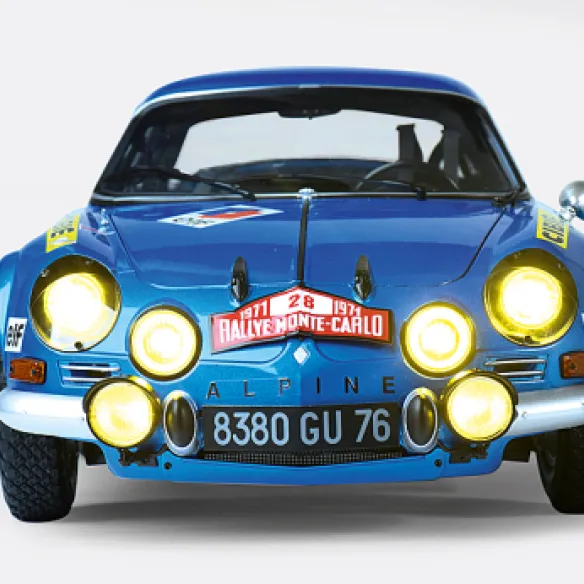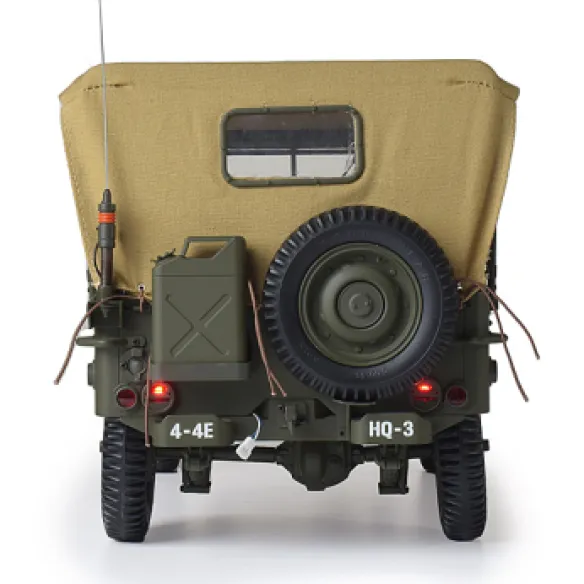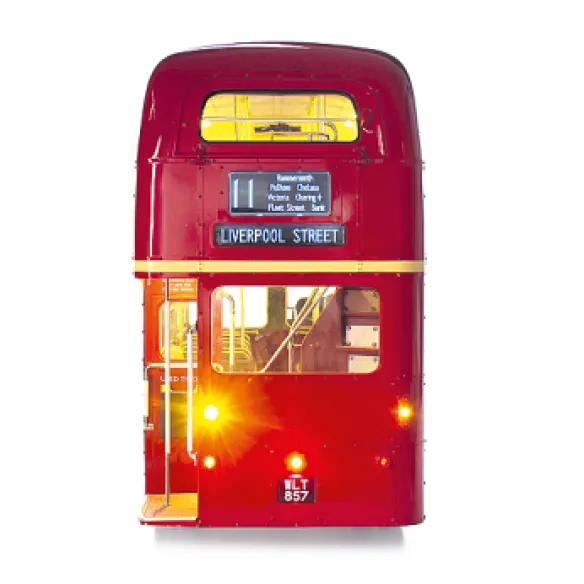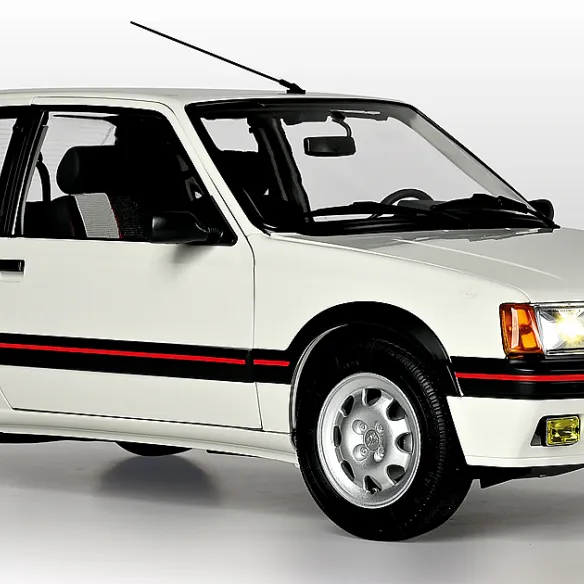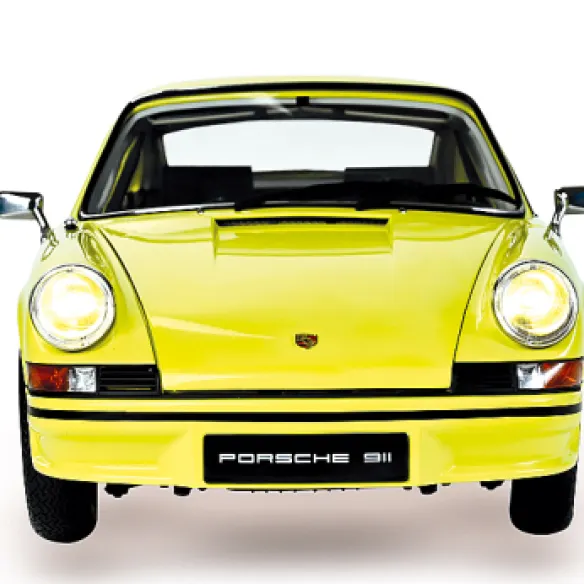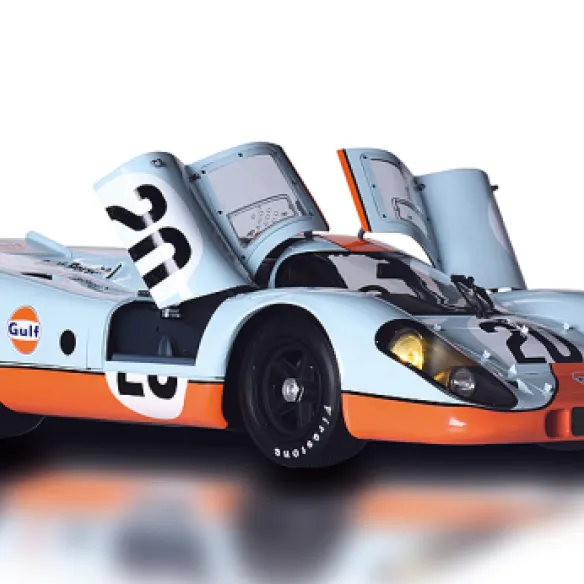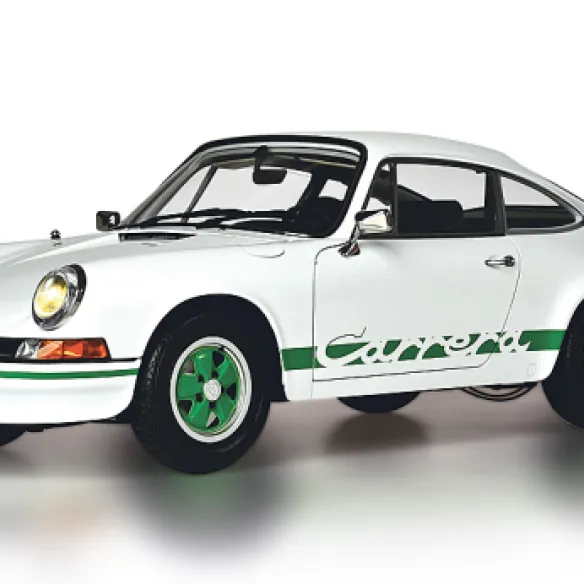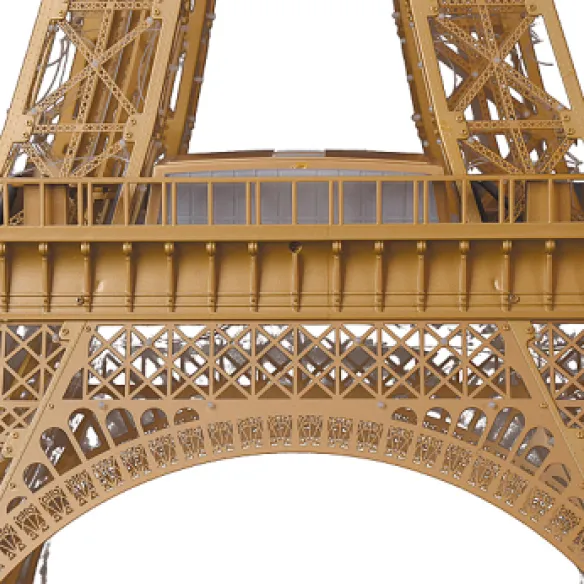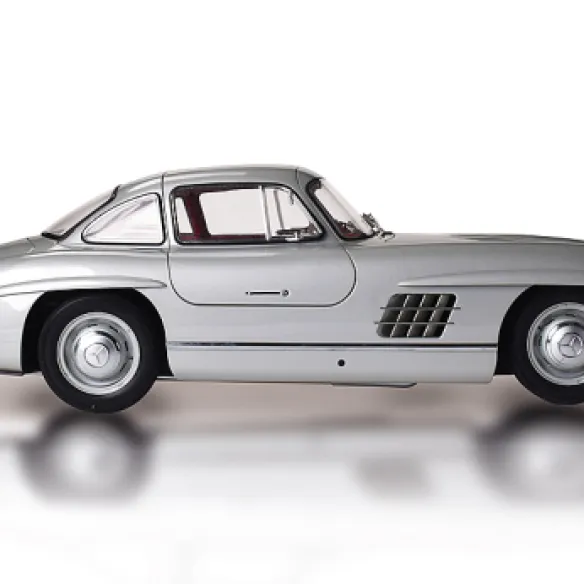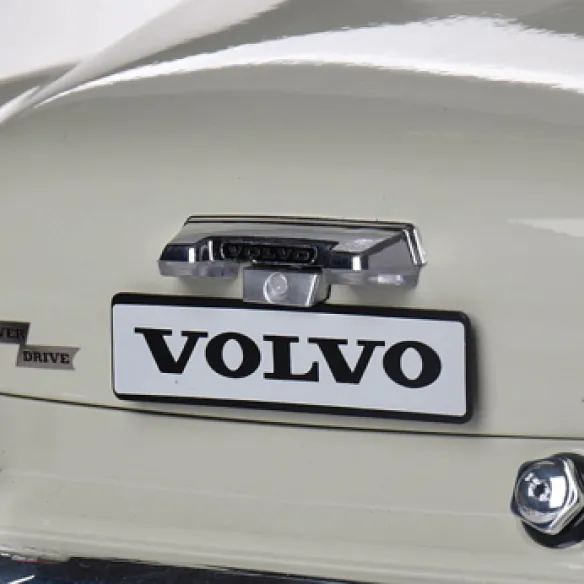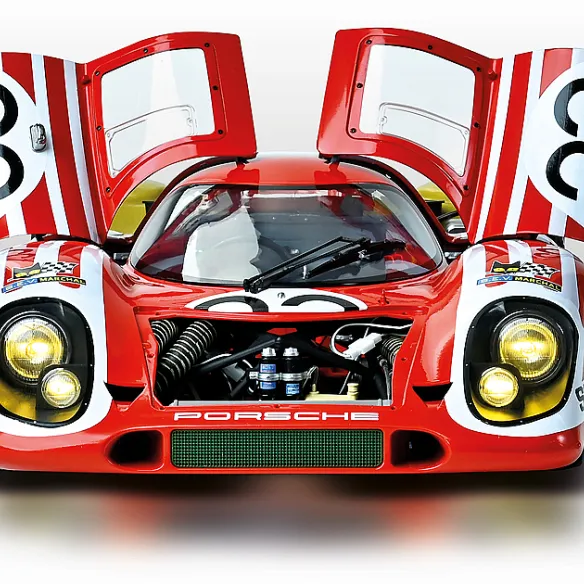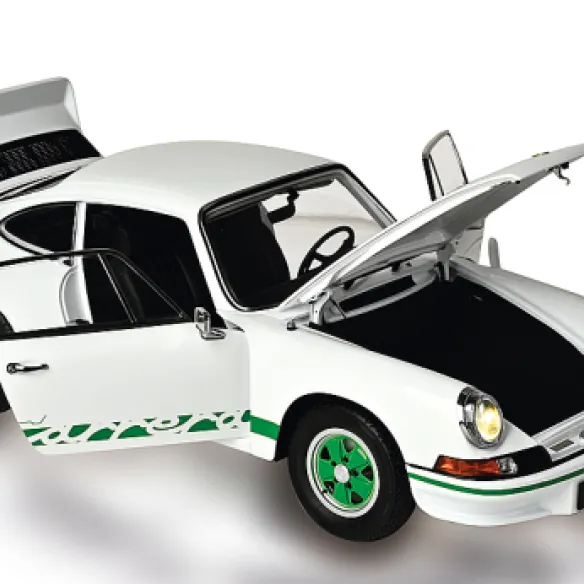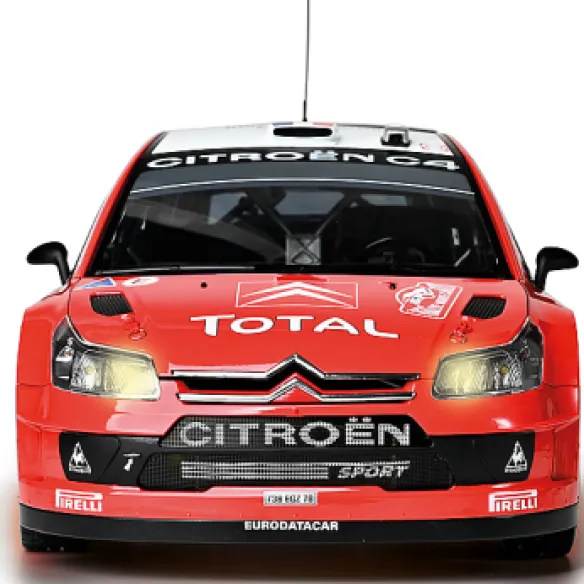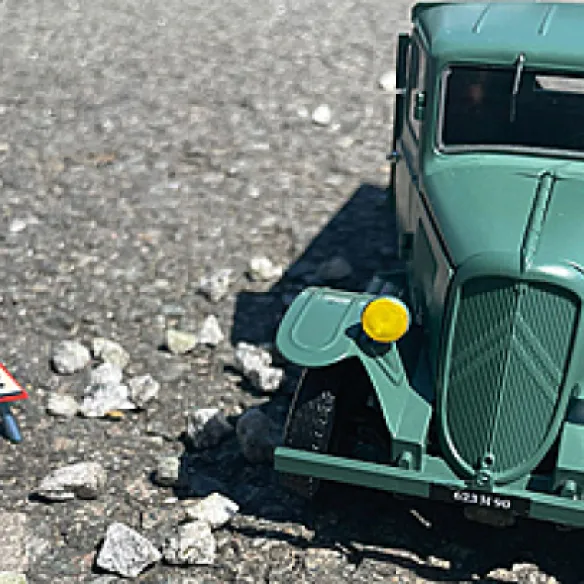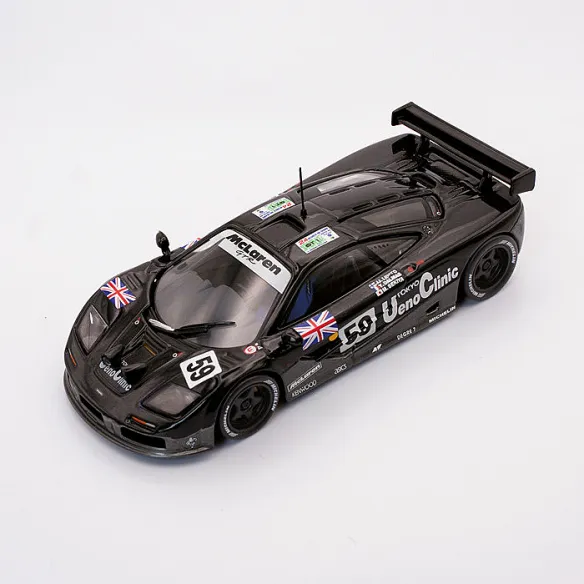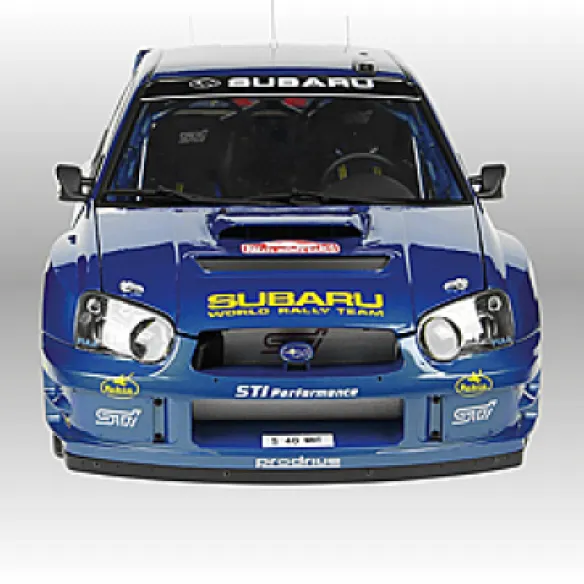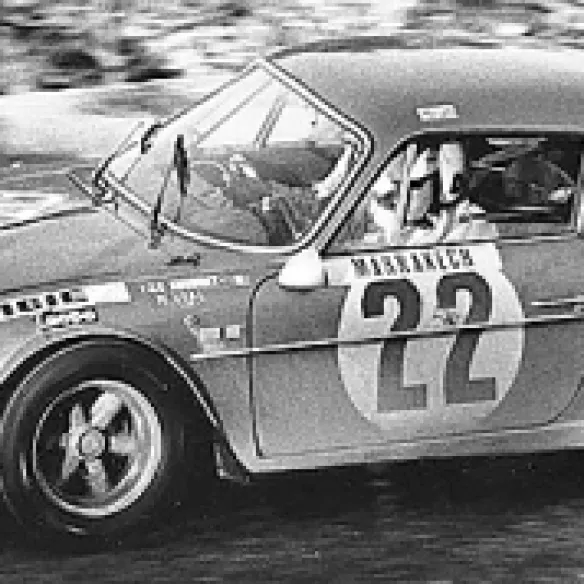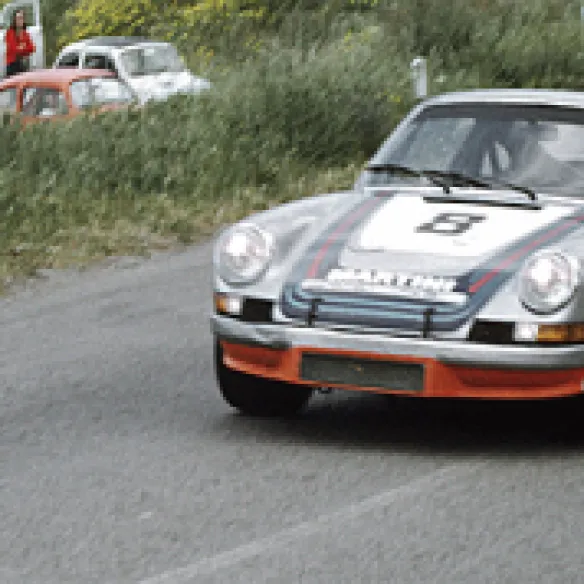
From the outset, the A 310 had the difficult task of continuing the legendary legacy of the A 110 while trying to win a position in the hearts of the Berlinette enthusiasts. From the start, the new Alpine impressed press and public with its original styling and modern, attractive lines. The A 310, reportedly Jean Rédélé's favourite car, enjoyed less prestige than its predecessor, but was the most successful car in Alpine history.

The 1976 model year marked the end of the A 110 Berlinette for Alpine, as well as the end of the four-cylinder version of the A 310, which now carried a V6. © IXO Collections SAS - Tous droits réservés. Crédits photo © Renault D.R. / Archives et Collections
When it was presented at the Geneva Motor Show in March 1971, the Alpine A 310 was equipped with a four-cylinder 1600 engine derived from the Renault 16 TS. Five years later, it was equipped with the new V6 PRV engine that turned it into the most powerful French sports car of its time. It is therefore important to realise that the A 310 was originally built around a V8 engine architecture. With this model, Jean Rédélé wanted to offer a four-seat Grand Touring coupé, with the clearly stated objective to challenge the Porsche 911 in this category.

The Alpine A 310 remained true to the previous Berlinette's structure, with a central beam chassis and a longitudinal engine mounted in the rear overhang. © IXO Collections SAS - Tous droits réservés. Crédits photo © Renault D.R. / Archives et Collections
The start of the four-cylinder engine
The use of the Renault 16 TS's four-cylinder 1,605cc engine, similar to the one the Berlinette 1600 was equipped with, was not a deliberate choice, but rather a convenient solution. Régie Renault, which had just taken over management of the Dieppe-based manufacturer, wanted to market this model as soon as possible and not waste time developing a new engine. As a result, the A 310 (type VE with carburettor) emerged in a form that did not necessarily correspond to what its designers had imagined. Commercially, this was noticeable: in 1973, two years after its introduction, 666 A 310s were produced, compared to 658 A 110 Berlinettes, and the following year the latter took over in sales. The reason is simple: with a similar engine, the A 310 was more than 120 kg heavier than its predecessor, and users eventually criticised this car for a lack of power and torque. From 1974, the 127 hp fuel-injected engine from the R17 Gordini was available (Type VF), and two years later a more economical and less powerful (93 hp) 1,647 cc carburettor engine version was also available derived from the R16 TX (Type VG).

The modern cabin styling with high-back leather seats incorporating headrests enables the A 310 to compete with luxury models in its segment. © IXO Collections SAS - Tous droits réservés. Crédits photo © Renault D.R. / Archives et Collections
A providential V6
The arrival of a more powerful engine was eagerly awaited as the A 110 was soon to be phased out (the last 1600 SX model disappeared in 1977). The V6 PRV type 112-730, a joint design by Peugeot, Renault and Volvo, was fitted in the new A 310 from 1976. This 2,664cc block, made entirely of aluminium, was derived from the Renault 30 TS. It was valve-controlled with one overhead camshaft per bank and was powered by two inverted Solex carburettors. The A 310 V6 featured an original Renault four-speed bevel gearbox, but a five-speed gearbox, taken from the Renault 30 TX, was available as an option from the 1979 model year. The bodywork of the new V6 version, still composed of resin and fibreglass elements, was redesigned. At first glance, the main difference is the elimination of the six headlights for individual blocks of just four headlights. The traditional beam chassis was strengthened, as well as the independent suspension, to support the heavier V6 engine.

The first version of the A 310 had a successful in-line four-cylinder engine, the Renault 16 TS 1.6-litre, now branded with the Alpine logo on the cylinder head. © IXO Collections SAS - Tous droits réservés. Crédits photo © Renault D.R.
A desirable development
A significant change to the A 310 V6 (Type 2700 VA), the brand's only model since the discontinuation of the four-cylinder in 1976, was made in the 1981 model year ( described by some as the Series 2 or Phase 2) presented at the Paris Motor Show in October 1980. Aesthetically, the bodywork was significantly reworked, making the car look more modern despite the old existing design. The most visible innovation concerned the new front and rear bumper, more enveloping and now completely black. The fenders were broadened to accommodate the new low-profile Michelin TRX tyres, giving the car a more aggressive look. The Alpine Renault letters that were previously moulded into the spoiler were removed and replaced by self-adhesive lettering applied directly onto the bodywork. Based on the new commercial strategy, it is now Renault in capital letters that precedes Alpine in lower case.... Mechanically, the use of the Renault 5 Turbo rear-axle improved the lack of roadholding (caused by the weight of the engine in the rear overhang) that was occasionally criticised.
First shows
In front of the new factory on the Avenue de Bréauté in Dieppe, Jean Rédélé unveiled the Alpine A 310 coupé on 8 March 1971. Three days later, the A 310 was introduced at the Geneva Motor Show, the place where new sports cars were usually presented. It was still only a test model, the public version would not be launched until the following October at the Paris Salon, Porte de Versailles, at a price of 44,800 francs, standard version. In order to be approved by the Service des Mines, the rear of the A 310 needed to be modified several times since its initial presentation, in particular the rear window as well as the rear lights that are now positioned lower, below bumper level.

The first 4-page black and white catalogue of the new Alpine was illustrated with photos of the initial prototype with its louvered rear window. © IXO Collections SAS - Tous droits réservés. Crédits photo © Renault D.R. / Archives et Collections
An Italian-style exercise
Special bodywork on an Alpine chassis was such a rare phenomenon that the version of the A 310 designed by Italian designer Sergio Coggiola stood out on Alpine's stand at the Paris Motor Show in 1972. Trade show visitors were amazed by the quality of the finish of the prototype. However, this model was just a 1/1 scale model made of plaster and mounted on a modified chassis. Externally, the overall look was maintained and the main change affected the front end, where the headlight ramp below the window was replaced by retractable headlights. The interior was completely redesigned and showed a better finish than the original. The wheelbase of the A310 Special was extended by 70 mm and, with the increased overhangs, the overall body length now measured 4.38 m, 20 cm longer than the original model.

The Coggiola project will not be completed due to the lack of funds, although it will be on display at the Dieppe factory for several months. © IXO Collections SAS - Tous droits réservés. Crédits photo © Renault D.R. / Archives et Collections
An honourable achievement
With the arrival of the V6 engine, the A 310 only fully met the expectations of the Alpine Competition Department. The car made its official debut in the 1976 Tour de France Automobile, driven by Jean Ragnotti and Jean-Pierre Aujoulet . A few weeks later, Guy Fréquelin gave the A 310 V6 its first success by winning the Rallye du Var. The following season was particularly successful: in addition to Guy Fréquelin's French Rally Championship title (8 wins), Jean Ragnotti won the French Rallycross Championship, while Austrian Herbert Grunsteidl won the European Cup for this class. In the 1979 French Rally Cross Championship, Jean-Pierre Beltoise won the A 310 prepared by Politecnic.

The A 310 V6 entered in Group 5 (Prototypes) by the Renault Sport Calberson team wins the French rally championship with Guy Fréquelin and Jacques Delaval. © IXO Collections SAS - Tous droits réservés. Crédits photo © Renault D.R. / Archives et Collections
The arrival of the V6 PRV
In spring 1973, the Dieppe research office received the V6 PRV, designed in collaboration with Peugeot, Renault and Volvo. Immediately it was decided to modify the chassis of a four-cylinder A 310. The transformation of the chassis was entrusted to Henri Gauchet, who had to find a solution for the installation of the voluminous V6 and the transmission. Here he was assisted by Marcel Hubert, responsible for the realisation of the bodywork, and by engine manufacturer Bernard Dudot. In August 1974, Mauro Bianchi, also involved in the development of the first A 310 prototypes, was asked to carry out the first tests on the Dijon-Prenois circuit. This 90° open V6 engine, built entirely in aluminium, had a displacement of 2,664 cm3 (bore x stroke: 88 mm x 73 mm) and generated 150 hp at 6,000 rpm.

The V6 PRV, known for its solidity and reliability, will also continue to be used in the last Alpine A 610 of 1990. © IXO Collections SAS - Tous droits réservés. Crédits photo © Renault D.R. / Archives et Collections
Technical sheet
Recent articles

06/05/2024
PORSCHE 935/78 « Moby Dick »
Trois ans d’évolution pour arriver à 850 ch de puissance
Read more
05/05/2024
PORSCHE 911 CARRERA 2.8 RSR
A SINGLE MOTTO : REDUCE WEIGHT AND GET MORE HORSEPOWER FROM THE ENGINE
Read more

01/05/2024
PORSCHE 917 kH
The most refined engine never created by porsche
Read more


 English
English français
français Deutsch
Deutsch español
español italiano
italiano português
português